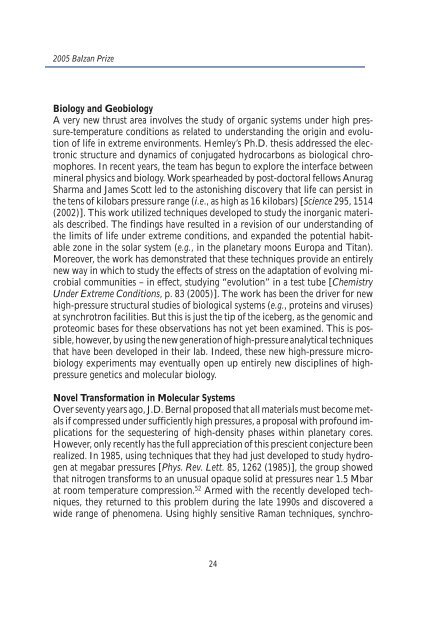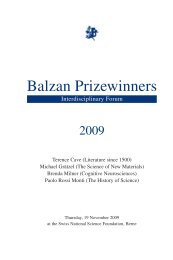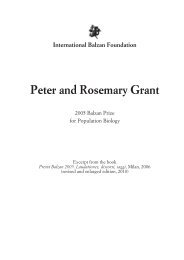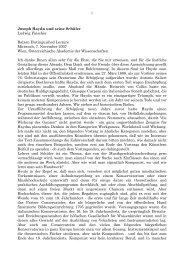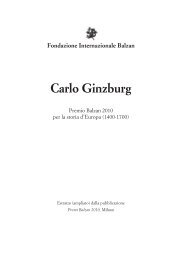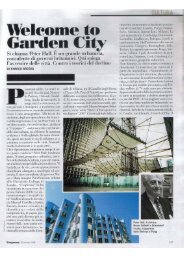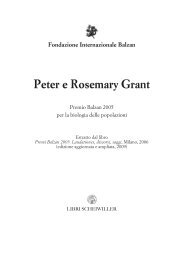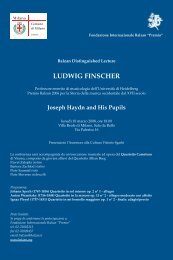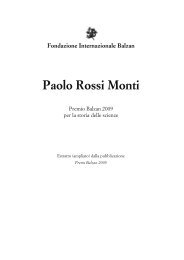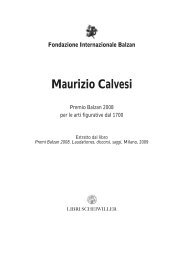Russell J. Hemley and Ho-kwang Mao
Russell J. Hemley and Ho-kwang Mao
Russell J. Hemley and Ho-kwang Mao
Create successful ePaper yourself
Turn your PDF publications into a flip-book with our unique Google optimized e-Paper software.
2005 Balzan Prize<br />
Biology <strong>and</strong> Geobiology<br />
A very new thrust area involves the study of organic systems under high pressure-temperature<br />
conditions as related to underst<strong>and</strong>ing the origin <strong>and</strong> evolution<br />
of life in extreme environments. <strong>Hemley</strong>’s Ph.D. thesis addressed the electronic<br />
structure <strong>and</strong> dynamics of conjugated hydrocarbons as biological chromophores.<br />
In recent years, the team has begun to explore the interface between<br />
mineral physics <strong>and</strong> biology. Work spearheaded by post-doctoral fellows Anurag<br />
Sharma <strong>and</strong> James Scott led to the astonishing discovery that life can persist in<br />
the tens of kilobars pressure range (i.e., as high as 16 kilobars) [Science 295, 1514<br />
(2002)]. This work utilized techniques developed to study the inorganic materials<br />
described. The findings have resulted in a revision of our underst<strong>and</strong>ing of<br />
the limits of life under extreme conditions, <strong>and</strong> exp<strong>and</strong>ed the potential habitable<br />
zone in the solar system (e.g., in the planetary moons Europa <strong>and</strong> Titan).<br />
Moreover, the work has demonstrated that these techniques provide an entirely<br />
new way in which to study the effects of stress on the adaptation of evolving microbial<br />
communities – in effect, studying “evolution” in a test tube [Chemistry<br />
Under Extreme Conditions, p. 83 (2005)]. The work has been the driver for new<br />
high-pressure structural studies of biological systems (e.g., proteins <strong>and</strong> viruses)<br />
at synchrotron facilities. But this is just the tip of the iceberg, as the genomic <strong>and</strong><br />
proteomic bases for these observations has not yet been examined. This is possible,<br />
however, by using the new generation of high-pressure analytical techniques<br />
that have been developed in their lab. Indeed, these new high-pressure microbiology<br />
experiments may eventually open up entirely new disciplines of highpressure<br />
genetics <strong>and</strong> molecular biology.<br />
Novel Transformation in Molecular Systems<br />
Over seventy years ago, J.D. Bernal proposed that all materials must become metals<br />
if compressed under sufficiently high pressures, a proposal with profound implications<br />
for the sequestering of high-density phases within planetary cores.<br />
<strong>Ho</strong>wever, only recently has the full appreciation of this prescient conjecture been<br />
realized. In 1985, using techniques that they had just developed to study hydrogen<br />
at megabar pressures [Phys. Rev. Lett. 85, 1262 (1985)], the group showed<br />
that nitrogen transforms to an unusual opaque solid at pressures near 1.5 Mbar<br />
at room temperature compression. 52 Armed with the recently developed techniques,<br />
they returned to this problem during the late 1990s <strong>and</strong> discovered a<br />
wide range of phenomena. Using highly sensitive Raman techniques, synchro-<br />
24


